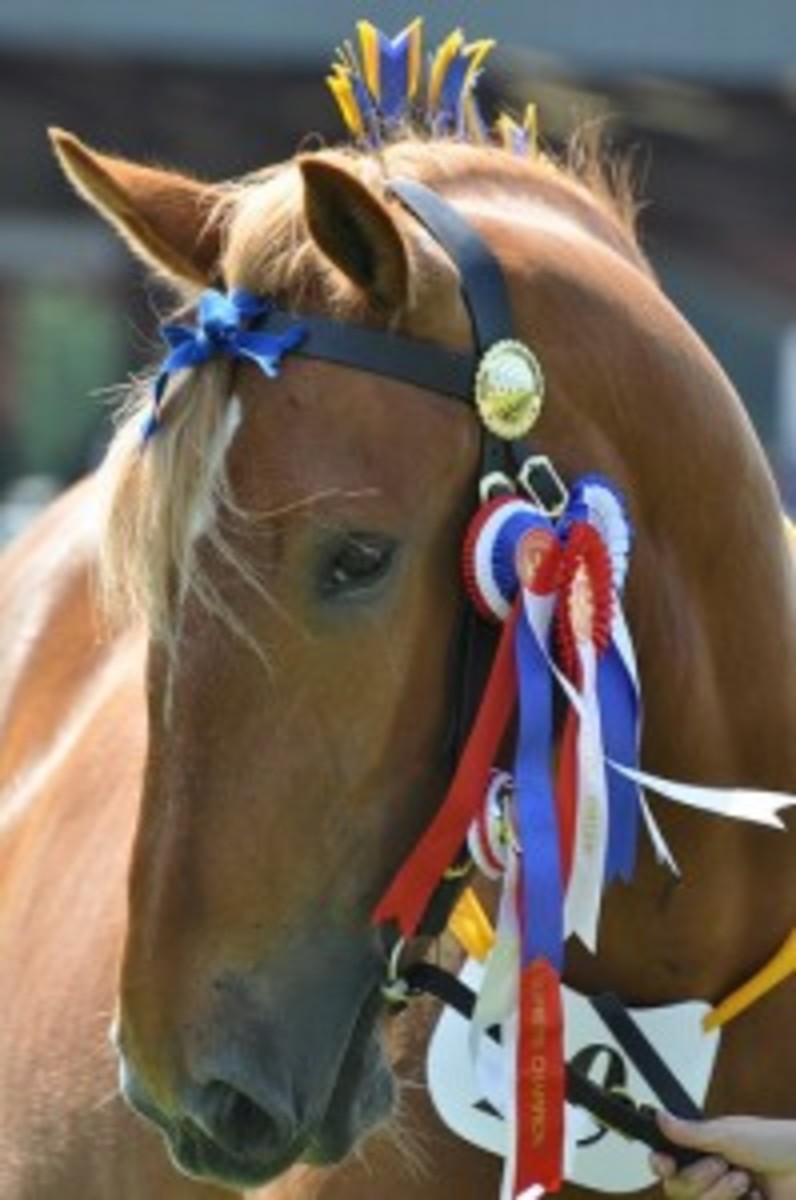
Grand Champion of the Suffolk Show 2010, originally uploaded by starling371
Meet the dapper Besthorpe Achilles, a 5-year-old Suffolk Punch stallion. He’s had a big week, after being named Supreme Champion and Best-In-Show at the Suffolk County Show in Ipswich, England. He is owned by Professor David Cadman, according to the Suffolk Horse Society.
The Suffolk breed of heavy horses is somewhat beyond rare and endangered. They are downright precious. Only 41 foals were registered with the Suffolk Horse Society in 2009. Yet they are the oldest heavy horse breed in Great Britain, pre-dating the Shire and the Clydesdale. References to these horses have been found in texts as early as 1506.
There were once more than two million Suffolk horses in England alone. Now they are more endangered than the Giant Panda.
Suffolks are uniformly a soft chesnut, as the color is spelled when referring to these horses. They have short, clean legs, stout barrels and a stalwart outlook. They were bred to farm and especially to pull heavy loads. There’s not much excitement in the day-to-day life of a Suffolk Punch. Yet something in these horses brings out something very special in humans…especially humans with even the loosest of ties to the east of England. These horses are synonymous with their homeland the way that Morgan horses are to New England.
So, a conscious effort has been made to propagate Suffolks and the birth of a filly is cause for a great celebration. Stallions are inspected and licensed; no license is given if the stallion is believed to have any defects that might be inheritable. If you own a mare, it is almost your obligation to breed her. And for Besthorpe Achilles to be named the best stallion this year, the responsibility will be a heavy one, in more ways than one.
While other heavy breeds have “improved” their standard toward a more modern, leggy horse that can dash across a show ring and impress judges, the Suffolk breeders have tried to stay with the original ideals of an agricultural horse. Among the decisions made back in the early 1900s was to breed for good feet, and to remove the poor-footed horses from the gene pool by embarrassment. Reading their stud book history makes you wish that some modern breed associations would follow in the Suffolk’s nice, round, cleanly-spaced hoofprints.
One thing that the breed society did was add “best feet” classes to the show, and right along with “best mare” is the class for “mare with best feet”. In addition, the show has competitions for farriers, putting their prize money where their mouth is that their big horses need skilled farriers who understand how to work on heavy horses.
So hail to the young stallion champion and to all who are working so hard to save this fine breed. Each horse is a living piece of history, and a treasure. Even Queen Elizabeth owns and breeds a mare, as have many monarchs of Great Britain. It’s almost their patriotic duty. One look across the showground at Ipswich’s Suffolk County Show when it is filled with mares, and you’ll want to do your part, too.
Thank you to Nick Starling of Bury St Edmunds, England for the very kind use of this photo.








